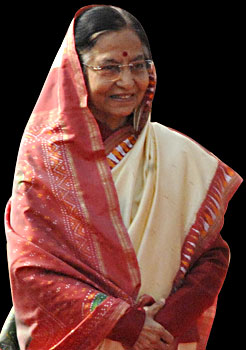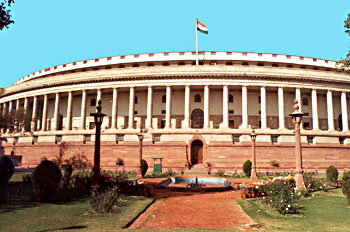 The Constitution of India has enlisted several situations whereby the situation is equivalent to emergency. During the times of emergency in the Indian Union the President is vested with special powers and he also becomes the real head of the country. The three conditions which may be deemed as emergency are emergencies arising out of war or external aggression or armed rebellion or threat; secondly, emergencies arising out of the failure of the constitutional machinery in the states, and thirdly, financial emergencies.
The Constitution of India has enlisted several situations whereby the situation is equivalent to emergency. During the times of emergency in the Indian Union the President is vested with special powers and he also becomes the real head of the country. The three conditions which may be deemed as emergency are emergencies arising out of war or external aggression or armed rebellion or threat; secondly, emergencies arising out of the failure of the constitutional machinery in the states, and thirdly, financial emergencies.
Article 352 of the Constitution lays down that if the President is satisfied that the security of India or any part thereof is threatened by war or external aggression or armed rebellion he may, by Proclamation, make a declaration to that effect. The President may make a Proclamation of Emergency even before the actual occurrence of such incidents provided he is satisfied that there is an imminent danger thereof. But no such proclamation can be issued by the President unless the Union Cabinet communicate to him in writing that such a proclamation should be made. The question whether a Proclamation of Emergency can be questioned by any court of law or not was decided by the constitution 38th Amendment Act, 1975 which lays down that the satisfaction of the President mentioned in clauses 1 and 3 shall be final and conclusive and shall not be questioned in any court on any ground. The same Act empowers the President to issue multiple Proclamations on different grounds even at a time when a previous Proclamation is in operation. The constitution 42nd Amendment Act, 1976 further extends the scope of the operation of a Proclamation of Emergency. It lays down that the President may make a Proclamation of an Emergency in respect of the whole of India or of such part of the territory thereof as may be specified in the Proclamation. A Proclamation of Emergency may be revoked by a subsequent Proclamation. Such a Proclamation of Emergency must be laid before each House of Parliament and will cease to operate at the expiration of one month unless before the end of that period, it has been approved by both Houses of Parliament. But if the Proclamation of Emergency is issued at the time when the House of the People has been dissolved or if its dissolution takes place during the period of two months following the Proclamation of Emergency, then the Proclamation will cease to operate unless the House of the People approves by a resolution the Proclamation at the expiration of 30 days from the date when the House first sits after its reconstitution. The House of the People can, by a resolution signed by one-tenth of its members ask for a special session of the House to consider the revocation of Proclamation.

Article 356 provides that if the President, on receipt of a report from the Governor of a state or otherwise, is satisfied that a situation has arisen in which the Government of a state cannot be carried on in accordance with, the provisions of this constitution, the President may by Proclamation (i) assume to himself all or any of the functions of the government of the state and all or any of the powers vested in or exercisable by the Governor or anybody or authority in the state other than the State Legislature and the High Court; and (ii) declare that the powers of the State Legislature shall be exercisable by or under the authority of Parliament. Any such Proclamation may be revoked or varied by a subsequent Proclamation. Every Proclamation under this article will cease to operate at the expiration of two months, unless before the expiration of that period it has been approved by resolutions of both Houses of Parliament. A Proclamation so approved shall, unless revoked, cease to operate on the expiration of a period of six months from the date of passing of the second of` the resolutions approving the Proclamation, the duration of a Proclamation shall not in any case remain in force for more than three years.
(c) Article 360 states that if the President is satisfied that a situation has arisen whereby the financial stability or credit of India or of any part of the territory thereof is threatened, he may by a Proclamation make a declaration to that effect.




















